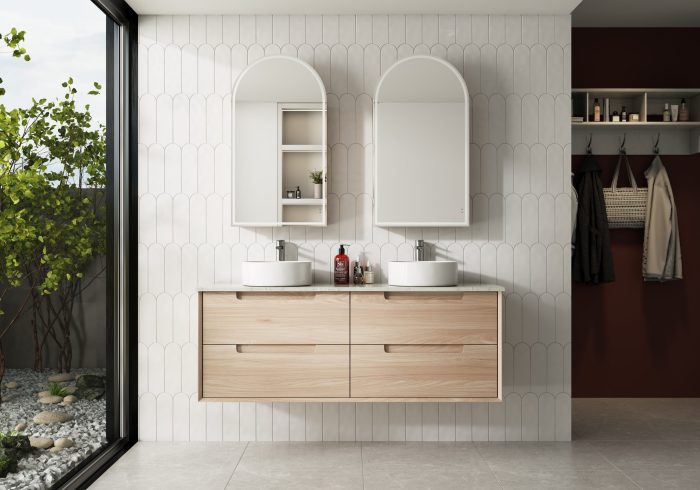Disabled toilet grab rails are an essential element in any bathroom designed to accommodate individuals with mobility or balance issues. The grab rails provide vital support and stability while using the bathroom, ensuring that everyone can use the toilet with confidence and dignity.
Whether you are a homeowner looking to make your bathroom more accessible or a business owner looking to meet accessibility standards, disabled toilet grab rails are a must-have. In this article, we will explore the various guidelines and provide tips for proper installation.

Grab Rail Guidelines Under the ADA
The Americans with Disabilities Act (ADA) provides guidelines for the installation of grab rails in public restrooms, including disabled toilets.
Toilet handrail heights are an important consideration when installing grab rails in disabled toilets. The ADA recommends a height of between 33 inches and 36 inches above the floor for grab rails, as this allows individuals with mobility impairments to easily reach and hold onto the rail for support. It is important to follow these guidelines when installing grab rails to ensure that they are accessible and safe for use by individuals with disabilities.
In addition to the recommended disabled grab rail height, the ADA also provides guidelines for the length and strength of grab rails. According to the ADA, grab rails should be a minimum of 12 inches long and should be able to support at least 250 pounds of force. These guidelines are in place to ensure that grab rails are strong enough to provide support to individuals who rely on them. It is important to follow these guidelines when installing grab rails to ensure that they are safe and effective for use.
Disabled Toilet Grab Rails Heights

The toilet grab rail height according to Australian standards is an important consideration in the design and construction of any building that is intended to be accessible to people with disabilities. The Building Code of Australia (BCA) and the Disability (Access to Premises – Buildings) Standards 2010 outline the minimum requirements for the installation of grab rails in disabled toilets, including the required height and spacing of the rails.
According to disabled toilet handrails regulations, the disabled toilet handrail height should be 800-1400mm above the finished floor level. This height is intended to allow for the use of the grab rails by a range of different users, including those who are seated on the toilet or those who are standing. It is also recommended that the grab rails be spaced at a maximum of 900mm apart, in order to provide sufficient assistance for users.
The toilet grab rail height is just one of the considerations outlined in the BCA and the Disability Standards for the installation of disabled toilet handrails. These standards also specify requirements for the diameter of the grab rails, the materials that can be used for the rails, and their load-bearing capacity. All of these requirements are intended to ensure that disabled toilet handrails are safe and effective for use by people with disabilities.
Tips for Installing Disabled Handrails
To ensure that these handrails are properly installed and effective for use, it is important to follow certain guidelines when installing them. Below are some key considerations to keep in mind when installing disabled handrails:
- Proper height: Make sure that the disabled handrail height is correct so they are accessible and comfortable for the user to hold onto. This is especially important for toilet rails for the elderly, as they may need to use them while sitting or standing up.
- Stability: In order to ensure the safety and stability of the user, the handrails need to be securely anchored to the wall or floor.
- Durability: Choose handrails made from durable materials, such as stainless steel or aluminum, so they can withstand daily wear and tear. It is important to choose mounting hardware that is appropriate for the specific wall material to ensure that the handrail is securely fastened and able to support the necessary weight.
- Slip-resistant: Handrails should have a slip-resistant surface to prevent accidents and falls. Especially for the elderly with decreased balance and coordination, these slip-resistant safety handrails for the elderly are crucial.
- Easy to clean: Toilet rails for elderly should be easy to clean and maintain, as they may come into contact with moisture and germs. A smooth and non-porous surface is ideal for easy cleaning of handrails.
Wrapping Up
Grab rails are a vital component of any accessible bathroom, especially for disabled people and the elderly, providing a sense of security and stability in the bathroom. In addition, choosing quality toilets and grab rails from reliable manufacturers like MyHomeware is also essential to achieve the best result. So anytime you need toilets and grab rails for special family members, do check and pick those that not only meet the necessary regulations for disabled toilet handrails but also add a touch of style to any bathroom. And never forget to follow regulations to install them.
FAQ about Disabled Toilet Grap Rails Heights
Yes, there are some toilet grab rail height Australian standards. Aside from the height and spacing requirements for grab rails, the disability standards and BCA also specify other requirements for a disabled toilet handrail. As part of these requirements, grab rails must have a certain diameter, have a certain material, and must be able to bear a certain load. It is imperative that all of these requirements are met so that disabled toilet handrails are safe and effective.
Yes, the disabled toilet grab rails can be installed in any type of bathroom that has been designed to make it accessible to people with disabilities. Private homes, public facilities, and commercial buildings may all qualify for this type of installation. Grab rails must be installed in a way that is compliant with the relevant regulations and standards, and are adapted to meet the individual needs of the users.
Sure, elderly individuals especially those who need extra assistance moving to and from the toilet can also benefit from grab rails. So it is important to follow all regulations to install a non-slip grab rail able to support the necessary weight and fasten them securely.





